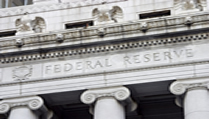 Some might call it “two Feds in one.” Although Federal Reserve Governor Daniel Tarullo has made the rounds decrying the evils of the shadow banking system, two St. Louis Fed economists think they actually serve a purpose.
Some might call it “two Feds in one.” Although Federal Reserve Governor Daniel Tarullo has made the rounds decrying the evils of the shadow banking system, two St. Louis Fed economists think they actually serve a purpose.
“While some analysts have asserted that the shadow banking system is redundant and inefficient, it is not difficult to see the benefits of securitized banking,” write Rajdeep Sengupta and Bryan Noeth, economist and researcher respectively at the St. Louis Fed, in “Is Shadow Banking Really Banking?” “Securitization allows for risk diversification across borrowers, products and geographic location.”
The authors argue the system is necessary because it “provides a variety of securities with varying risk and maturity, it provides financial institutions opportunities to better manage their portfolios than would be possible under traditional banking.”
Out of step? This is largely contrary to what most global regulators have been saying. Most want to see the unfettered arrangement more regulated, which they say will make the global financial system more stable. Current European Central Bank head Mario Draghi, European Commissioner Michel Barnier and many others often take swipes at shadow banking. The European Systemic Risk Board plans on bringing forward regulatory proposals in early 2013. US regulators have been less successful in their attempts to bring shadow banking, in particular money market funds (MMFs), into the fold (see related story), but they’re still trying.
The St. Louis Fed even comes out in support of MMFs, writing that Rule 2a-7 of the Securities and Exchange Commission’s Investment Company Act of 1940 makes sure the assets held by MMFs are of high quality and more. The “safety of investments in MMMFs comes from the fact that the securities they invest in are regulated to be of high quality and short maturity, such as Treasury bills and highest-grade commercial paper.” These rules were in place even before the 2010 SEC enhancements of money market funds by the SEC; these included periodic stress tests, shorter maturities, and the requirement to hold a minimum percentage of high-quality assets, among other fixes.
Who’s not transparent? One of the main arguments for more shadow banking regs is that they lack transparency. But Messrs. Sengupta and Noeth see it differently and in fact think bank balance sheets are murkier than the shadow banking system. “Contrary to popular belief, [shadow banking] increases transparency and disclosure because banks now sell assets that would otherwise be hosted on their opaque balance sheets.”
The authors also argue that banks themselves are rendered fragile by their very nature. “Banks are intermediaries [in, say, business] that obtain funds from lenders in the form of deposits and provide funds to borrowers in the form of loans,” the authors write. But, “by performing this function, a bank is essentially rendered fragile. The fragility comes from the fact that even a healthy bank can be the victim of a bank run.” To protect against this, banks have to rely on public insurance such as the FDIC.
So shadow banking is necessary, the authors conclude, calling it a parallel system that complements the banking system. Given that, they say the challenge is to continue to try to make it even safer.